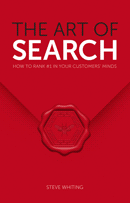

"The mental process of acquiring knowledge and understanding through thought, experience & senses."
How Cognition Works
Even though you have never before encountered the item in the photograph at the top of the page, if you did physically encounter it you would know what it is and, perhaps more importantly, you would also understand the meaning of the thing it was attached to and, therefore, understand how to use both without any instruction.
That's cognition working - right there.
Cognition is the subconscious process your brain uses to experience, understand and navigate the world. This process is so efficient you don't even know it's happening but without it you'd have to stop and think every time you encountered a new door, cup, pen or handle in order to try and work out what it is, what it's for and how to use it.
Think about it
If it wasn't for cognition we'd have to carry around in our heads a mental description of each and every item that we had encountered in our lives in order to be able to re-identify and re-use them. Our brains have developed this incredibly powerful ability to model and store the rules of an object and then use that model to identify things and to successfully navigate the world.
As a child you encounter a monkey, develop the cognitive rules for an ape and store it as a mental model; then, for every new species of ape you encounter for the rest of your life, you're able to use that model to recognise an ape and understand how to approach and treat it. Such simplification enables higher-level thinking in humans.
The cognitive rules also apply to websites
We all have our very own individual mental models of how websites (should) work. If we encounter a website that doesn't work according to our own mental model then we'll soon become frustrated and take our frustration out on the nearest mouse, keyboard or trackpad. Confusing and frustrating websites tend to be a little on the flashy, clever side - confusing and frustrating websites ignore the basic cognitive rules that we have all come to rely upon.
We all know how to work a webpage - you simply click it
The only way we are able to navigate the web is through fingertip control; we click, tap, swipe and waggle gestures at webpages and expect them to do what we want. The direct human interface with a website is fragile and it's so easy to break. Fussy, complicated, busy, thoughtless, uninspiring and plain boring page layouts will never encourage users to click in the right place.
Simply more clickable
A Sub@omic cognitive website is easy to use because it will have been built by a web designer that understands the visual clues we all look for a feel comfortable with; the design and the layout of the webpage will conform to design conventions and proportions resulting in a clean and easy to use page.
It's all too easy to get lost in a lousy website. A website has no discernible edges, you have no idea how deep or wide any given website is let alone get a sense of whereabouts in the website you actually are. Nothing will drive a Customer away quicker than a sense of loss or detachment. It is the prime responsibility of the website owner/operator to guide the Customer through the website along known journey paths towards the point of online conversion. The more you think about the needs of the Customer the better their user experience (UX) will be and the more business your website will generate.
Delivering a great user experience
Because the cognitive web designer will primarily be thinking of the users' needs they're already thinking one click ahead. All the time, whilst we are designing and developing a page, Sub@omic's designers remain conscious of where the individual will be on their journey through the website in order to provide the cognitive design clues so that the Customer will know what they need to click next to move them closer to the conversion.

 Sub@omic's RICE Model
Sub@omic's RICE Model Do Not Click This
Do Not Click This

